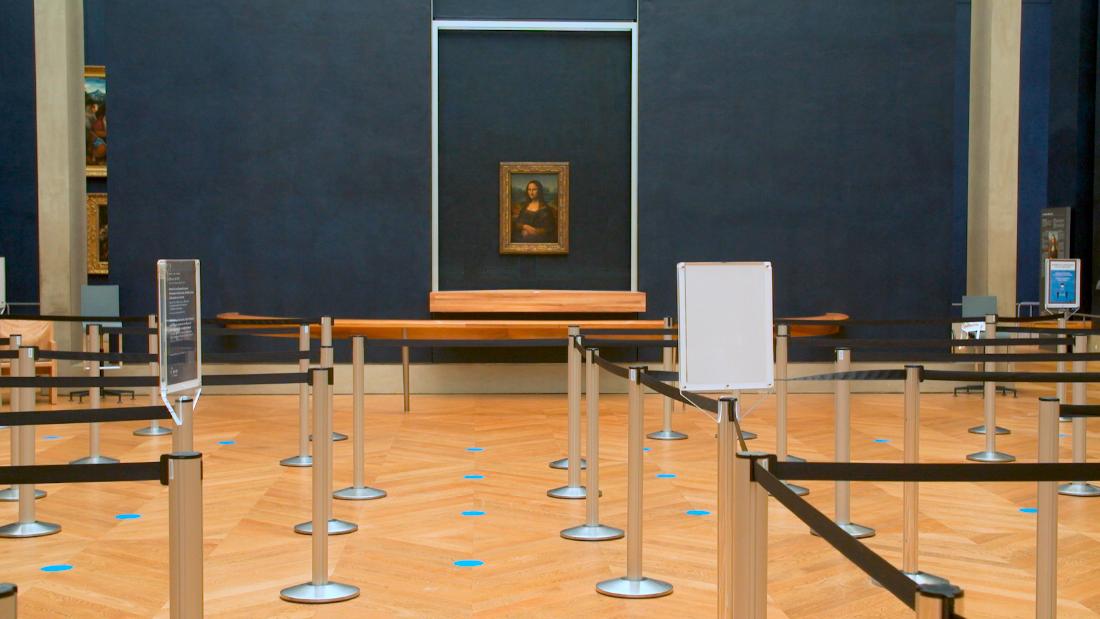
But they’re not all alone – the museum is making the most of the closures by carrying out long-planned renovations.
“(The Louvre) is still alive, even though from the outside it seems to be really sleeping,” says project manager Gautier Moysset, standing in front of a series of 19th century doors that once opened onto the bedroom of French kings.
Behind him, Gaëlle Dulac gently brings the doors back to life, alternating between boar bristle and badger hair brushes while mimicking the grain of the wood with coats of paint.

The “Mona Lisa” alone in the Louvre without visitors.
The curator says the silent period has helped him rethink how the Louvre displays its vast collection.
“Suddenly a painting seems too big (or) too small, or the frame doesn’t match the one in the neighborhood,” he explains. “You have to listen to what the works have to say. Sometimes they don’t like each other and you have to take them apart.”
Curator Julien Cuny also takes the opportunity to reflect on the Persian collections he manages.
“There must be cohesion in the museum. What is the work doing here? How does it speak to the other works?” he says, guiding a 400-pound forklift truck down a corridor lined with Roman marble sculptures.
“It’s sad, because we can do a lot from a logistical point of view,” says Cuny. “But the artworks are made to be seen.”